In response to Jeff Bezos’ assertion that he can’t think of anything better to do with his billions than build a moon base, let us collectively imagine a list of more worthwhile ideas he could fund. How about an organization that would gift all expenses paid trips to Amsterdam for any nay-saying, “We can’t possibly do that here” Angelino unable to imagine a future without gobs of free parking? Speak out in favor of parking at a community meeting and, congratulations, here’s your KLM ticket. Drop an angry I-can’t-find-parking-tweet? Get ready to smell the tulips.
This Streetfilms production shows what can happen when we de-clutter the cars from our cities. Here in LA, those cars no longer “spark joy.” Get rid of them and we could have gardens, playgrounds, space for public transit and so much more.
Support Root Simple
Modern Originals: At Home with MidCentury European Designers. I’m not a fan but the kids these days love their midcentury tchotchkes. This book almost had me wanting to ditch those fuddy duddy furniture reproductions I’ve been working on and learn to love Corbu. Buy this book and you’ll help put a few Barcelona chairs in Bezos’ moon motel.

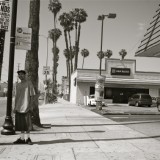
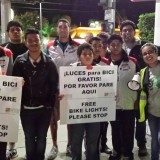
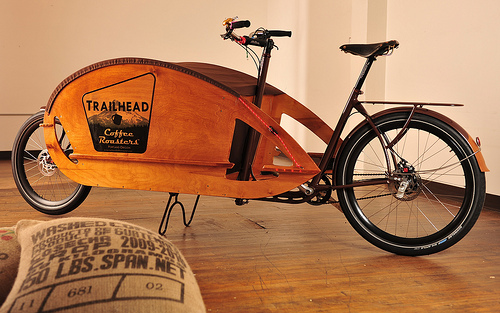
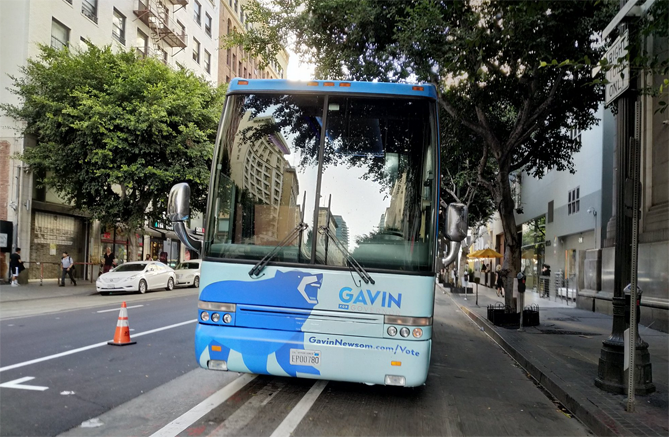
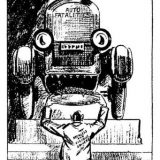
While I cannot agree enough that we do NOT need a base on the moon, I will say I see a different side to the parking issue. Living just a few miles North of Portland, Oregon, and doing much of our business and work in Portland, I see the flip side of the parking issue. It rains here, well, most of the year. Portland, in its questionable wisdom, is trying to get us all to bike everywhere – to the point that it is so hesitant to improve freeway infrastructure in its attempt to force us all onto bikes that the freeways have become unsafe and hopelessly clogged. Population has exploded in this area in the past few years, and improving freeways for better traffic flow is not unreasonable in any way. It’s what any other city would do.
In response to the vast and unfathomable population of homelessness and lack of housing, Portland has decided it’s best to build apartments, but instead of using the ground level and underground for parking that those residents (most with cars) will need, it has built shop rental and NO parking. This leaves residents to either park in the street, which competes with homeowners who have lived there for many years and many who don’t have driveways, or using up the lots and street parking of nearby businesses, which don’t have much parking to begin with. Its big income for the developers, who not only profit from residential rents in their buildings, but high rents from the businesses on the ground floor.
Now Vancouver, Washington, just across the Columbia river and OUR nearest small city, is following suit. Getting my hair done once a month has become a pain. I don’t mind walking half a mile or so to the shop from my car when the weather is good, but when it’s raining here most of the time it’s enough to make me think about finding a new salon, and business owners in our region are seeing losses of business as drivers’ frustration levels rise.
In a town like Phoenix or LA, the biking seems feasible. The fact remains however, that it is far too wet and cold for most Pacific Northwest residents to consider biking everywhere. I’m sure it’s doable for those living close to city centers or close to their jobs, but housing prices for those close-in locales has skyrocketed, and most cannot afford to live there. Barristas working in downtown may only find affordable housing six to seven miles away in smaller suburbs, and who wants to bike seven miles in rain?
Cars aren’t going anywhere, and people need places to park them. As our cities grow in both area and population, there needs to be a balance in between conservation and livability. There are simply too many of us to live in close-enough proximity to the businesses we patronize and that employ us to not have motorized transport.
Two thoughts:
1) The choice doesn’t have to be between bikes and cars. A robust public transportation system gets you to the salon without a car and without getting soaked.
2) It rains a lot in Amsterdam. In all of Northern Europe, in fact (snows, too). Yet they drive much less than Americans. There are other, workable options for moving people around that don’t require all cars all the time. Even in bad weather.
The moon base is a great idea for many reasons…migration is in our DNA, let’s face it. Perhaps we will not go to the moon en masse, but in the moon’s microgravity it’s a lot easier to launch heavy loads that could travel from the moon to start, and eventually re-supply, other colonies further out in the solar system — planetary moons, Mars, etc. Add to that the mining and manufacturing operations the moon could provide and I believe it’s a valuable step towards protecting our planet from having its resources completely exhausted. You CAN be in favor of homesteading/self-reliance, reducing your personal carbon footprint and still see the value in a manned space program. It doesn’t have to be either/or. You don’t want to migrate anymore? Fine and dandy. Let the next generations decide if they want to venture outward into the unknown or not — just like your own migrating ancestors did.
The idea for Amsterdam is great, but cities in Europe are laid out differently. More compact.
Personally I would love to see more parks and mass transit that is reasonable to use. I would love to be able to walk to a train line and travel into LA and be able to travel back in the same day. Right now it takes me several hours to travel by car and more in the evening during rush hour traffic. Sitting for 4 hours in evening traffic to get home is not fun. And living closer is out of the question with the crazy housing prices.
Oh and one lovely thing about the video is that it shows the wonderful alternative ways of travel. I looked at it with longing.
Oh dear you’ve hit a nerve.
Speaking as a person living just outside one of these European cities with no parking…. it is true that some people complain about the lack of street parking and the expensive parking garages (i’m not sure but i think it’s around 30€/day). However, many more people complain about the traffic at rush hour caused by people who insist on driving into the city because … I guess they can’t bear to leave their cars in one of the billions of park and rides just outside the city and hop on our extremely efficient public transportation? Many times I’ve cruised home on my bike and passed long lines of cars at a complete standstill and they’re always single occupancy. It’s absurd and I can’t imagine how much worse the congestion would be if the city opened up more parking. We have a car but my husband takes the bus downtown to work specifically because there’s no reliable or cheap parking, and I’m sure a lot of other people think like him. It’s definitely a solution to ease gridlock in my opinion, but it won’t necessarily do away with it because too many people cling to their cars.
However, as I mentioned, our tram and bus system is A+ so first you’ve got to put that in place…
I had to snicker at the “migration is in our DNA = moon bases for the win!” comment.
I’d hazard a postulation that it’s only in the “DNA” of people who haven’t figured out culturally-carried ways of living within the means of their regions’ carrying capacities.
Take us, as a case in point: it’s a lot easier for us to conceive of using a bunch of resources in an attempt to use the moon as a jump-off point for finding more resources because… we can’t curtail our consumption. Heaven forbid we ” protect our planet from having its resources completely exhausted” by NOT EXHAUSTING THEM.
I’m sorry, I’m not usually one to snark on other commenters’ opinions, but seriously, the way to stop screwing things up is to stop doing the screwy things, not engage in more of the same.
And Jeff Bezos is suffering from a terrible lack of imagination.
Wendy, your basic idea on the reasons for human migration is incorrect. Most migrations have happened as people fled economic, religious or political strife, but others happened because of something more esoteric — the idea of a different or better life. The migration to the west in our country happened mostly for this reason, and still does. I would also argue that people fleeing poverty (such as the potato famine in Ireland) or political oppression (like the Pogroms in Europe) did not “fail to find culturally-carried ways of living within their regions carrying capacities.” They wanted a different life, in a place where they could live the way they wanted to. That feeling IS a part of who we are as a species (otherwise we’d all still be living as close to the Middle Eastern Hearth (where mankind first began as a species) as possible. We tend to spread out. As I said, the whole point of my comment is that it does NOT have to be either/or. Humankind can heal the planet and still explore others. I remember my own grandparents carping about how we “didn’t need to waste all that money going to the moon, since there was nothing useful up there,” when the moon landings occurred when I was little. They were, I always thought, the ones with a profound lack of imagination.
(somehow I can’t make my comment follow the one below, though it’s intended to)
Perhaps my view is colored by my recognition of pre-industrialized people in my region (Northern CA and PNW) being rather settled. There were migratory patterns to be sure, but home turf was home turf – so much so that place-base created religio-cultural references and religio-cultural actions affirmed and nurtured the importance of staying in place.
I suppose descendants of the “Middle-Eastern Hearth” have something in common – I’m not sure it’s so much a species-wide commonality (see pre-conquest Australia for other ways of doing things) EXCEPT as a function of the desire to find more resources. In places where resource limitations were absolute and absconding-options were limited, people either adapted or didn’t.
What do you say to the likelihood that becoming space-faring will consume tremendous resources and leave earth even more depleted? Is that a solution or a drilling-down?
(ok, nevermind, it was accurately placed – and refers to the comment above)
Good points, all. To answer your question, I don’t think our spacefaring efforts would make much difference to the negative. I don’t see anyone in 500 years saying, “wow, if we just hadn’t used the metals, fuel and money for those moon/Mars spaceships, we’d all be just fine now and Earth would be in great shape.”People used to say that about the moonshot program, too. “If they put all that moonshot money into ending hunger, there would be no more hunger!” Maybe, but for how long would that have lasted? As long as the population continues to increase, and we get better at saving lives and living to be old, we are going to use more resources and take up more space on this planet. Of course the obvious solution to all these things is population control on THIS planet, but that’s such a cultural/religious/personal “hot potato” topic we will probably not ever agree on any solutions as a species. So exploring whether or not we could migrate outwards (would it even be feasible in meaningful numbers?) seems like a good option to invest in and explore with some baby steps. And Bezos knows there are plenty of Rare Earth elements in abundance on the moon that are hard to come by here, so it’s another financial win for him too, potentially. Plus even our region’s PNW tribes (I live in Oregon) most likely came over the Bering Land Bridge from Asia in an Ice Age at some point, in search of food, so most humans at some point came from someplace else. So to me, it might make sense to look to the next logical place we will migrate to, since we will probably not take the overpopulation issue in hand on a global level.
I’ve been interested in localized sewage treatment. And this,
“Hassalo on Eighth is a multi-building, mixed-use LEED Platinum high-rise development located in the Lloyd EcoDistrict of Portland, Oregon. Developed by American Assets Trust and completed in 2015, the community includes three new residential towers and one existing office tower spanning four city blocks.
The largest project in the North America to achieve Living Building Challenge (LBC) net-zero non-potable water goal.”
it’s very exciting to see buildings doing their own sewage treatment. Here’s more:
“The onsite treatment system has a name: NORM, or Natural Organic Recycling Machine. A multi-stage treatment train uses natural biological processes to treat 100 percent of the wastewater from all three new buildings (click to see “How NORM Works,”). The most prominent feature is the trickling filters, which are housed in four red tanks at the north end of the pedestrian corridor. Wastewater is pumped to the top of the filters, where it flows—or “trickles”—down media that supports bacteria growth. The bacteria feed on nutrients in the wastewater.
From there, the wastewater flows through a pair of tidal wetlands. Every two hours, as the first cell fills, the second empties. This ebbing and flowing promotes bacteria growth on the gravel; the bacteria and plant roots take up nitrogen and phosphorus from the wastewater. The tidal cells are 14 feet deep.
“This is unique,” says Muñoz. “The cells are much deeper than the typical constructed wetland.”
Next, the wastewater flows through “wood chip” wetlands, a denitrification reactor and a second set of tidal wetlands. Finally, the water is filtered and disinfected with UV light and ozone before being sent to the reuse tank.
The wastewater is treated to Class A standards, as defined by the Oregon DEQ. This most stringent classification also allows the most uses. At Hassalo on Eighth, the treated water is used to flush toilets, irrigate landscaping, resupply the cooling tower and recharge groundwater via recharge wells located next to the trickling filter tanks.”
https://www.greenbuildermedia.com/design/case-study-urban-waste-management
p.s.
I for one would love to travel to outer-space or the moon or even Mars, provided, we master sewage treatment, water and power, and HVAC and clean air to breathe, out there.
But we perfect it here first.
Yes, you really have hit a nerve with this one!
As a Californian with both a bike and a car, I feel both sides of this issue. Yes, I love a parking place right in front of my destination as much as the next person. In fact, I love it so much that I’ve mostly given up driving around Berkeley and Oakland, where I live, so that I can park my bike wherever I want, and cruise past long lines of grid-locked cars on my way to and from work.
We just went to LA to visit family and I marveled at the abundance of (very large) parking spaces. We spent the few days there driving between every little thing, and parking right out front. Luxurious in it’s way. I also started to feel almost sick from so much car time, in and out of hot, stuffy cars before the AC gets going, buckling and unbuckling kids in car seats, waiting at intersections over and over again. I felt like my life was draining away in an idling machine.
Back home, I’m quite happy to be back on my bike, even in the heat. I’m getting fresh air and exercise, making my way along shadier back roads, and avoiding the whole parking scene, as in “It’s getting real in the Whole Foods parking lot”: https://www.youtube.com/watch?v=2UFc1pr2yUU (It’s worth the 3.5 minutes if you haven’t seen it yet!)
I fantasize about removing parking from our streets. So much public space is taken for private vehicle storage, making the streets less accessible and safe for pedestrians and bikes. Almost daily, as I ride out in traffic to avoid being doored by someone exiting a parked car, I envision proper bike paths where drivers couldn’t hit me, even if they’re texting, and beautiful streetscapes that look more like parks than parking lots. Maybe someday. . .
Also, a note about biking in the rain: Yes, I’m in California where it doesn’t rain as much as Portland, but we do get our share, and when it rains, it’s torrential. With the right gear, biking in the rain is lovely. Fresh air that smells wonderful, plus even more smugness as you pass people stuck in worse traffic than usual. On a rainy day, my 4 mile commute is significantly faster biking than driving. As the Norwegians say, “There’s no such thing as bad weather, only bad clothing.”
The essential gear for biking in the rain is: waterproof boots, waterproof-breathable pants that fit over regular pants, waterproof-breathable jacket, high quality cold-weather bike gloves, good tires and fenders on your bike, head and tail lights, reflectors. The only thing that can’t be helped is that you will get your hair wet. So if you have a blow-out that can’t get wet, you must drive your car to preserve your hairstyle. 😉
Pingback: On Moon Bases, Free Parking and One Hell of a Grim Swedish Science Fiction Movie | Root Simple
Pingback: Losing car storage « Harmony Gardens